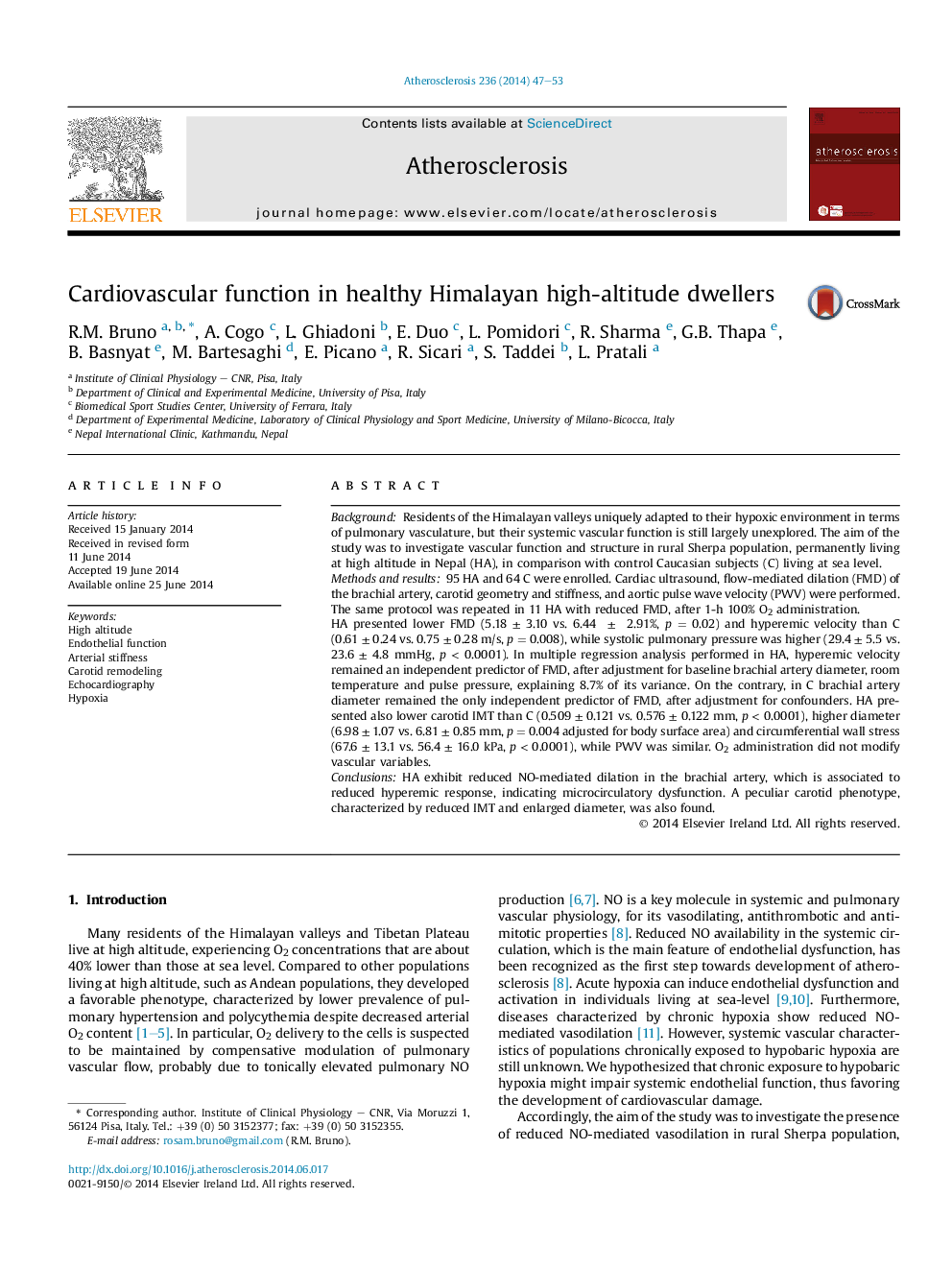| کد مقاله | کد نشریه | سال انتشار | مقاله انگلیسی | نسخه تمام متن |
|---|---|---|---|---|
| 5944838 | 1172346 | 2014 | 7 صفحه PDF | دانلود رایگان |
- Vascular function in healthy Himalayan high-altitude dwellers was investigated.
- They showed lower flow-mediated dilation than sea-level Caucasian individuals.
- Hyperemic stimulus was also reduced, suggesting microcirculatory dysfunction.
- Maladaptive carotid remodeling was also found.
BackgroundResidents of the Himalayan valleys uniquely adapted to their hypoxic environment in terms of pulmonary vasculature, but their systemic vascular function is still largely unexplored. The aim of the study was to investigate vascular function and structure in rural Sherpa population, permanently living at high altitude in Nepal (HA), in comparison with control Caucasian subjects (C) living at sea level.Methods and results95 HA and 64 C were enrolled. Cardiac ultrasound, flow-mediated dilation (FMD) of the brachial artery, carotid geometry and stiffness, and aortic pulse wave velocity (PWV) were performed. The same protocol was repeated in 11 HA with reduced FMD, after 1-h 100% O2 administration.HA presented lower FMD (5.18 ± 3.10 vs. 6.44  ±  2.91%, p = 0.02) and hyperemic velocity than C (0.61 ± 0.24 vs. 0.75 ± 0.28 m/s, p = 0.008), while systolic pulmonary pressure was higher (29.4 ± 5.5 vs. 23.6 ± 4.8 mmHg, p < 0.0001). In multiple regression analysis performed in HA, hyperemic velocity remained an independent predictor of FMD, after adjustment for baseline brachial artery diameter, room temperature and pulse pressure, explaining 8.7% of its variance. On the contrary, in C brachial artery diameter remained the only independent predictor of FMD, after adjustment for confounders. HA presented also lower carotid IMT than C (0.509 ± 0.121 vs. 0.576 ± 0.122 mm, p < 0.0001), higher diameter (6.98 ± 1.07 vs. 6.81 ± 0.85 mm, p = 0.004 adjusted for body surface area) and circumferential wall stress (67.6 ± 13.1 vs. 56.4 ± 16.0 kPa, p < 0.0001), while PWV was similar. O2 administration did not modify vascular variables.ConclusionsHA exhibit reduced NO-mediated dilation in the brachial artery, which is associated to reduced hyperemic response, indicating microcirculatory dysfunction. A peculiar carotid phenotype, characterized by reduced IMT and enlarged diameter, was also found.
Journal: Atherosclerosis - Volume 236, Issue 1, September 2014, Pages 47-53
